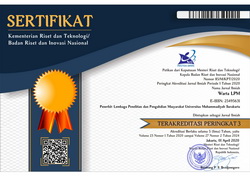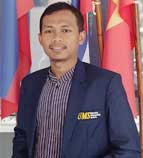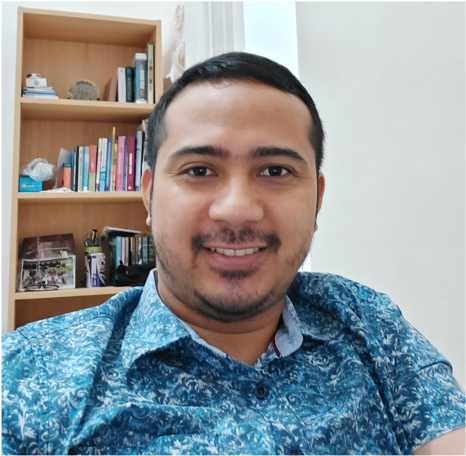Dukungan Kesehatan Jiwa dan Psikososial sebagai Bentuk Intervensi Perawat Jiwa pada Penyintas Bencana Gempa Bumi
DOI:
https://doi.org/10.23917/warta.v26i3.1503Keywords:
earthquake, mental health and psychosocial support, psychiatric Nurses, survivorAbstract
Mental Health and Psychosocial Support is a mental health effort for disaster survivors. Psychiatric nurses have competence in conducting it in every disaster situation. A refuge is a place for community service activities for mental nurses. Earthquake survivors who live in evacuation shelters are among the vulnerable groups experiencing mental health problems. There is a risk of mental health problems and survivors' psychosocial well-being requiring intervention from nurses. Mental health and psychosocial support by nurses can detect and prevent mental health problems and increase survivors' mental health resilience. Community service activities for natural disasters in Cianjur aim to detect early mental health problems and improve knowledge and skills in managing stress. Activities carried out in the form of group and individual mental nursing interventions. The method used is detecting mental health problems using the Self Report Questionnaire-20 (SRQ-20), providing health education through lectures, discussions and training skills regarding stress management. Activities were carried out in 4 batches and - each batch for two days. The number of survivors aged 18 and over who were intervened was 418 people from 4 villages in Cianjur Regency. The results of the SRQ-20 measurement show that 70.1% of survivors experience mental and emotional disorders. Evaluation of activities orally survivors could answer questions and demonstrate the stress management method given. Mental health and psychosocial support (DKJPS) is a standard mental nursing intervention in disaster mental nursing care. DKJPS can be applied to the practice of disaster mental nursing collaboratively by involving various scientific disciplines of nursing in the disaster area.
Downloads
References
Abou-Saleh, M. T., & Christodoulou, G. N. (2016). Mental Health of Refugees: Global Perspectives. BJPsych International, 13(4), 79–81. https://doi.org/10.1192/s2056474000001379
Aulady, M. F. N., & Fujimi, T. (2019). Earthquake Loss Estimation of Residential Buildings in Bantul Regency, Indonesia. Jamba (Potchefstroom, South Africa), 11(1), 756. https://doi.org/10.4102/jamba.v11i1.756
Brown, R. P., & Gerbarg, P. L. (2009). Yoga Breathing, Meditation, and Longevity. Annals of the New York Academy of Sciences, 1172, 54–62. https://doi.org/10.1111/j.1749-6632.2009.04394.x
Cénat, J. M., McIntee, S. E., & Blais-Rochette, C. (2020). Symptoms of Posttraumatic Stress Disorder, Depression, Anxiety and Other Mental Health Problems Following the 2010 Earthquake in Haiti: A Systematic Review and Meta-Analysis. Journal of affective disorders, 273, 55–85. https://doi.org/10.1016/j.jad.2020.04.046
Dückers, M., van Hoof, W., Willems, A., & Te Brake, H. (2022). Appraising Evidence-Based Mental Health and Psychosocial Support (MHPSS) Guidelines-PART II: A Content Analysis with Implications for Disaster Risk Reduction. International Journal of Environmental Research and Public health, 19(13), 7798. https://doi.org/10.3390/ijerph19137798
Gray, B., Hanna, F., & Reifels, L. (2020). The Integration of Mental Health and Psychosocial Support and Disaster Risk Reduction: A mapping and Review. International journal of environmental research and public health, 17(6), 1900. https://doi.org/10.3390/ijerph17061900
Généreux, M., Schluter, P. J., Takahashi, S., Usami, S., Mashino, S., Kayano, R., & Kim, Y. (2019). Psychosocial Management Before, During, and After Emergencies and Disasters-Results from the Kobe Expert Meeting. International Journal of Environmental Research and Public Health, 16(8), 1309. https://doi.org/10.3390/ijerph16081309
Gerritsen, R. J. S., & Band, G. P. H. (2018). Breath of Life: The Respiratory Vagal Stimulation Model of Contemplative Activity. Frontiers in human neuroscience, 12, 397. https://doi.org/10.3389/fnhum.2018.00397
Irsyam M, Widiyantoro S, Natawidjaja DH, Meilano I, Rudyanto A, Hidayati S, Triyoso W, Hanifa NR, Djarwadi D, Faizal L, Sunarjito (eds) (2017). Peta Sumber dan Bahaya Gempa Indonesia Tahun 2017, Cetakan pertama. Pusat Penelitian dan Pengembangan Perumahan dan Permukiman, Badan Penelitian dan Pengembangan, Kementerian Pekerjaan Umum, Bandung
BNPB Indonesia.(2022) Retrieved fromhttps://bnpb.go.id/berita/-update-327-orang-meninggal-dunia-pasca-gempa-cianjur-
Kato, Y., Uchida, H., & Mimura, M. (2012). Mental Health and Psychosocial Support after the Great East Japan Earthquake. The Keio journal of medicine, 61(1), 15–22. https://doi.org/10.2302/kjm.61.15
Keptner, K. M., Fitzgibbon, C., & O’Sullivan, J. (2021). Effectiveness of Anxiety Reduction Interventions on test Anxiety: A Comparison of Four Techniques Incorporating Sensory Modulation. British Journal of Occupational Therapy, 84(5), 289-297.
Komalasari, D. R., & Arif Pristianto. (2023). Peningkatan Pengetahuan tentang Cara Melakukan Latihan Fisik atau Olah Raga yang Aman bagi Penderita Diabetes Mellitus. Warta LPM, 26(2), 207–217. https://doi.org/10.23917/warta.v26i2.1247
Murti, M. A., Junior, R., Ahmed, A. N., & Elshafie, A. (2022). Earthquake Multi-classification Detection based Velocity and Displacement Data Filtering using Machine Learning Algorithms. Scientific reports, 12(1), 21200. https://doi.org/10.1038/s41598-022-25098-1
Parwanto, N. B., & Oyama, T. (2014). A Statistical Analysis and Comparison of Historical Earthquake and Tsunami Disasters in Japan and Indonesia. International Journal of Disaster Risk Reduction, 7, 122-141.
Perciavalle, V., Blandini, M., Fecarotta, P., Buscemi, A., Di Corrado, D., Bertolo, L., Fichera, F., & Coco, M. (2017). The Role of Deep Breathing on Stress. Neurological Sciences: official Journal of the Italian Neurological Society and of the Italian Society of Clinical Neurophysiology, 38(3), 451–458. https://doi.org/10.1007/s10072-016-2790-8
Pino, O., Pelosi, A., Artoni, V., & Mari, M. (2021). Post-Traumatic Outcomes among Survivors of the Earthquake in Central Italy of August 24, 2016. A Study on PTSD Risk and Vulnerability Factors. The Psychiatric quarterly, 92(4), 1489–1511. https://doi.org/10.1007/s11126-021-09908-9
Pv, J., & Lobo, S. M. (2020). Effectiveness of Relaxation Technique in Reducing Stress among Nursing Students. International Journal of Nursing and Health Research, 2(1), 54-56.
Raad, G., Tanios, J., Azoury, J., Daher, A., Fakih, C., & Bakos, H. W. (2021). Neurophysiology of Cognitive Behavioural Therapy, Deep Breathing and Progressive Muscle Relaxation used in Conjunction with ART Treatments: A Narrative Review. Human Reproduction Update, 27(2), 324–338. https://doi.org/10.1093/humupd/dmaa048
Rafiey, H., Alipour, F., LeBeau, R., & Salimi, Y. (2019). Prevalence and Determinants of PTSD 3 Years After an Earthquake in Iran. Community mental health journal, 55(3), 542–547. https://doi.org/10.1007/s10597-019-00384-x
Sanadgol, S., Firouzkouhi, M., Badakhsh, M., Abdollahimohammad, A., & Shahraki-vahed, A. (2020). Effect of Guided Imagery Training on Death Anxiety of Nurses at COVID-19 Intensive Care Units: a quasi-Experimental Study. Neuropsychiatria i Neuropsychologia/Neuropsychiatry and Neuropsychology, 15(3), 83-88.
Schwind, J. S., Norman, S. A., Brown, R., Frances, R. H., Koss, E., Karmacharya, D., & Santangelo, S. L. (2019). Association Between Earthquake Exposures and Mental Health Outcomes in Phulpingdanda Village After the 2015 Nepal Earthquakes. Community mental health journal, 55(7), 1103–1113. https://doi.org/10.1007/s10597-019-00404-w
Te Brake, H., Willems, A., Steen, C., & Dückers, M. (2022). Appraising Evidence-Based Mental Health and Psychosocial Support (MHPSS) Guidelines-PART I: A Systematic Review on Methodological Quality Using AGREE-HS. International Journal of Environmental Research and Public Health, 19(5), 3107. https://doi.org/10.3390/ijerph19053107
Toussaint, L., Nguyen, Q. A., Roettger, C., Dixon, K., Offenbächer, M., Kohls, N., Hirsch, J., & Sirois, F. (2021). Effectiveness of Progressive Muscle Relaxation, Deep Breathing, and Guided Imagery in Promoting Psychological and Physiological States of Relaxation. Evidence-based complementary and alternative medicine : eCAM, 2021, 5924040. https://doi.org/10.1155/2021/5924040
Troya, M. I., Greene, M. C., Santos, C. G., & Shultz, J. M. (2016). Conducting a Desk Review to Inform the Mental Health and Psychosocial Support Response to the 2016 Ecuador Earthquake. Disaster Health, 3(4), 90–101. https://doi.org/10.1080/21665044.2016.1261598
Downloads
Submitted
Accepted
Published
How to Cite
Issue
Section
License
Copyright (c) 2023 Warta LPM

This work is licensed under a Creative Commons Attribution 4.0 International License.















